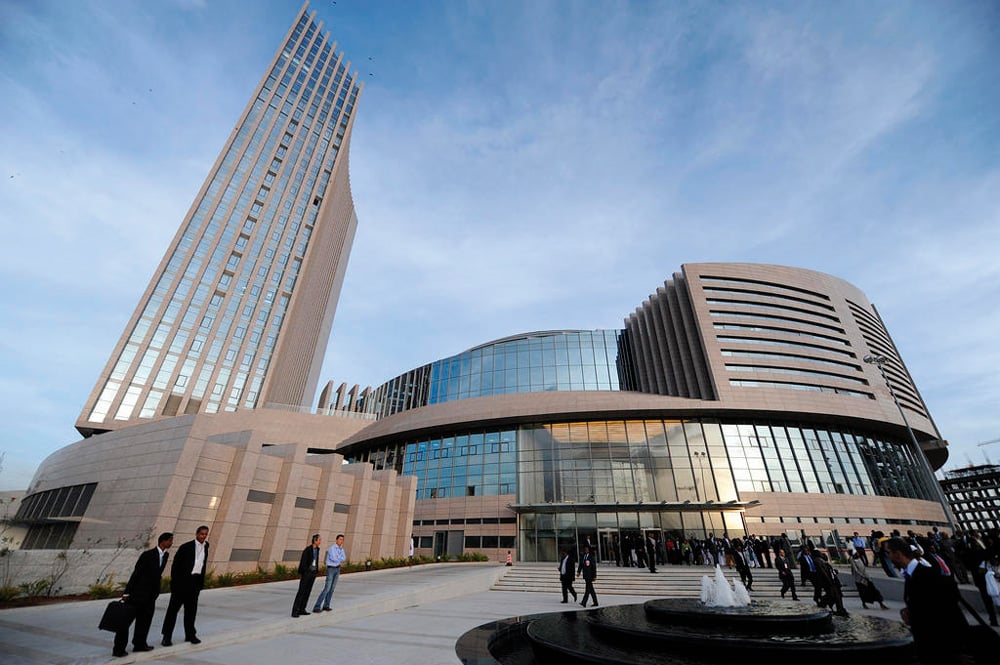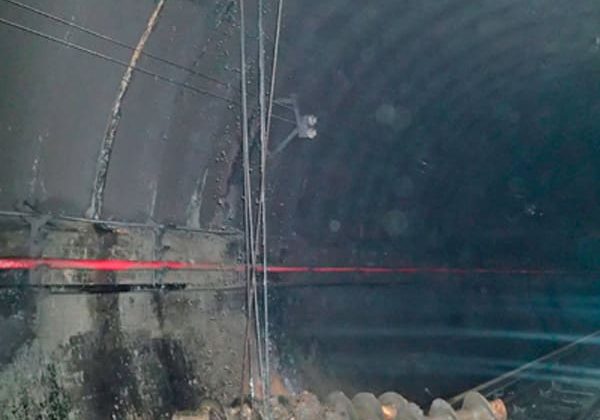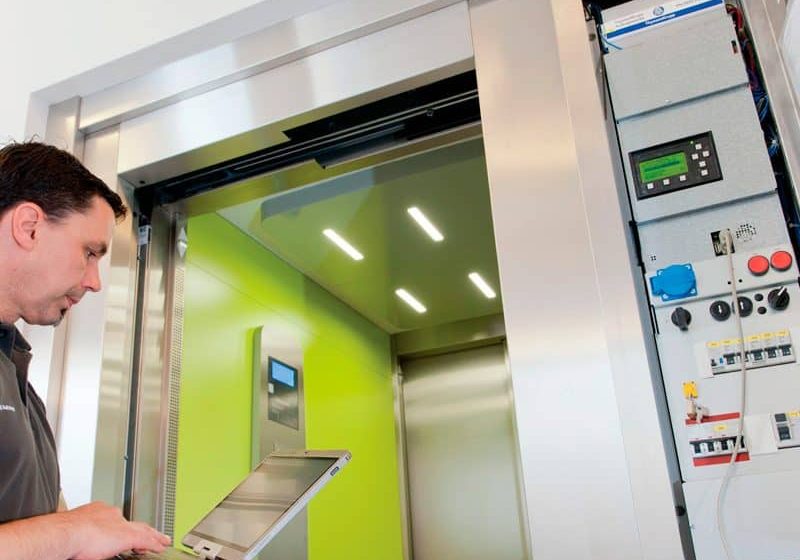Africa Power-Supply Shortages Create Opportunities
Feb 1, 2014

Unexpected power outages in Africa have opened a new market for power-backup solution providers while making recent innovations by elevator makers, such as solar-powered units, more desirable. In an effort to keep elevators running even when electricity is interrupted, commercial and industrial building owners and managers are increasing project costs to include an alternative power supply. Three incidents illustrate how badly a remedy is needed for Africa’s spotty power coverage.
On July 17, 2011, former U.S. Secretary of State Hillary Clinton, while addressing African heads of state and lawmakers gathered at the Chinese-built, 20-story African Union (AU) headquarters in Ethiopia’s capital of Addis Ababa, had to cut her speech short and left the country after a massive blackout hit the 100-m-tall building, stalling elevators and paralyzing the sound-address systems for hours.[1] Almost two years later, on May 23, 2013, Clinton’s successor, John Kerry, was set to address the AU summit during its 50th anniversary when he experienced a similar situation in its new headquarters building, built at a cost of $US200 million by China as a gift to the AU: an electricity blackout hit the structure, the tallest tower in Addis Ababa, which, at the time, had no reliable alternative power supply.[2] Like Clinton, Kerry left the country, cutting his visit short and canceling planned discussions with African leaders and foreign dignitaries.
Later, on September 4, Liberian President Ellen Johnson Sirleaf and her security chief became trapped in an elevator during the regional High Level Panel Meeting on Fragile States at one of the leading hotels in the Liberian capital of Monrovia.[3] The president’s executive protection service director forcibly opened the elevator door to get the president out before power was switched on minutes later.
Across the region, there are many similar, unreported incidents that illustrate the serious challenges industrial and commercial building owners face as electricity shortages persist across Africa. According to the International Renewable Energy Agency (IRENA), Africa has 147 GW of installed capacity, “a level comparable to the capacity China installs in one or two years.” According to IRENA, “average, per-capita electricity consumption in sub-Saharan Africa (excluding South Africa) is just 153 kWh/year. This is one-fourth of the consumption in India and just 6% of the global average.” Nearly 600 million people in Africa lack access to electricity, and blackouts occur almost daily.[4]
Inge Hackenbroch, director Africa/Middle East at Germany Trade & Invest GmbH, notes that due to Africa’s economic growth and rapidly increasing population, demand outstrips supply in many areas. As a result, individuals and businesses often fill power gaps by using expensive solutions, such as diesel power. This erodes the gross domestic product of some African economies by 1-5% each year.[4] To keep their facilities running, including vertical-transportation systems, many building owners and managers are buying power-backup systems, particularly diesel generators, Hackenbroch said. Petri Velikakoski, executive manager responsible for Africa business at MAN Diesel and Turbo in Augsburg, Germany, pointed out that new power stations are very expensive, and that few domestic construction companies are able to financially take on such large projects.
Elevator Companies Strive to Fill Gap
Diesel generators, however, are not the only answer to frequent power outages in buildings, including those in Africa. Elevator makers have also introduced solutions designed to help minimize the possibility of accidents or disruption of operation at either buildings or mines where vertical transportation is commonly used. For example, Otis said because diesel-powered generator sets have heavy architectural and financial impact on a building’s management, it developed a new solution, the Gen2® Switch, an autonomous battery-powered elevator (ELEVATOR WORLD, May 2013). “The cost of the project is reduced, because the elevator’s self-contained machinery enables promoters to recover revenue-generating space,” stated Marc Roussel, director of Otis Africa and New Equipment France.
Because it ensures an elevator’s operation even during a power outage, Gen2 is an ideal solution to power-outage problems, Roussel said. The invention, he said, is the multi-source elevator, which operates with a single-phase, 220V main circuit and can also use renewable energy sources such as solar and wind to recharge its batteries. Roussel described the Gen2 Switch:
“Powered by its system of four batteries, the Gen2 Switch is the first step toward the autonomous elevator, unaffected by power outages and fluctuations in the electrical grid. If the building project is not equipped with solar panels or wind generation, our Gen2 Switch simply plugs into a single-phase 220V outlet.”
Schindler Solar Elevator Raises Hope
Early this year, Schindler introduced a solution that relies on renewable energy, specifically solar (EW, June 2013). Analysts feel it could provide a stable power supply in regions such as Africa, where erratic supply has impacted the industrial and commercial building markets. The Schindler Solar Elevator was initially available in Europe and India and will be available in remaining markets such as Africa in 2014 (EW, October 2013). That raises hope that solar energy could be part of the solution to Africa’s energy problem. Furthermore, many buildings in Africa are low rise, which is where the solar-powered elevators operate best.
Schindler states its Solar Elevator both reduces costs and increases operability, since it runs independently of the power grid. The system has many energy-efficient features, such as standby power mode and car lights that automatically switch off. Schindler President of Marketing and Sales Bill Fiacco said, “The Schindler Solar Elevator is a major step forward in creating net-zero energy buildings in urban environments.”
Dinesh Musalekar, Avire Global’s general manager for India, the Middle East and Africa and resident director for India, said frequent power failures such as those experienced in energy-starved African countries could hinder vertical transportation. Musalekar said:
“Frequent power failure has a very adverse effect on the elevator performance, causing frequent passenger entrapments [and] lifts being out of operation, from the service point of view. The sudden failure of supply and resumption of the same also causes the high surge of current, which is not desirable for the elevator controllers and other electronics of the elevators.”
Although infrequent, serious accidents can happen during rescues of trapped passengers – entrapments that could have been caused by a power outage, Musalekar said.
Roussel pointed out that without electrical power, a traditional elevator stops operating, making a building’s upper levels inaccessible to people who cannot climb stairs due to reduced mobility. “In addition, repeated outages or voltage variations in the power circuit deteriorate an elevator’s electronic components. The cost of maintaining the machines affected by these phenomena is increased,” he said.
According to experts, Africa needs to increase investment in electricity generation by an estimated 250 GW by 2030 to keep pace with its economic growth. The additional generation, IRENA maintains, will mean capacity must double to approximately 7 GW a year in the near term, and quadruple by 2030. Roadblocks still exist, however:
“While access rates are improving in some countries, the business environment and policy framework are still not sufficiently robust to attract the level of private investment required to install the additional 250 GW by 2030. Many African countries are burdened by opaque policy frameworks and excessive red tape, while electricity subsidies and government-mandated pricing often hinder sustainable business investment.”[4]
Development Prospects Outweigh Concerns
Despite Africa’s power-supply challenges, many vertical transportation firms plan to invest in the region, because future development looks bright. Otis, active in almost every African country, either through Otis companies or exclusive distributors, said it will use its South African subsidiary to expand operations in South Africa, Angola and Zambia. Roussel said:
“In eastern Africa, we have just created Otis Kenya, which will help us to deliver the best service to our customers. In northern Africa, despite the events, we continue our operations and continue to serve our customers, with Algeria today becoming a fast-developing country with its landmark project the Great Mosque. Otis does believe in the development of Africa and we are investing more and more in developing technical skills.”
References
[1] Nazret.com, “Ethiopia: Power outage hits as Hillary Clinton addresses AU in Addis”; July 17, 2011.
[2] Ethiopia News Forum; May 26, 2013.
[3] The New Dawn (Monrovia); September 4, 2013.
[4] International Renewable Energy Agency (www.irena.org).
Get more of Elevator World. Sign up for our free e-newsletter.









